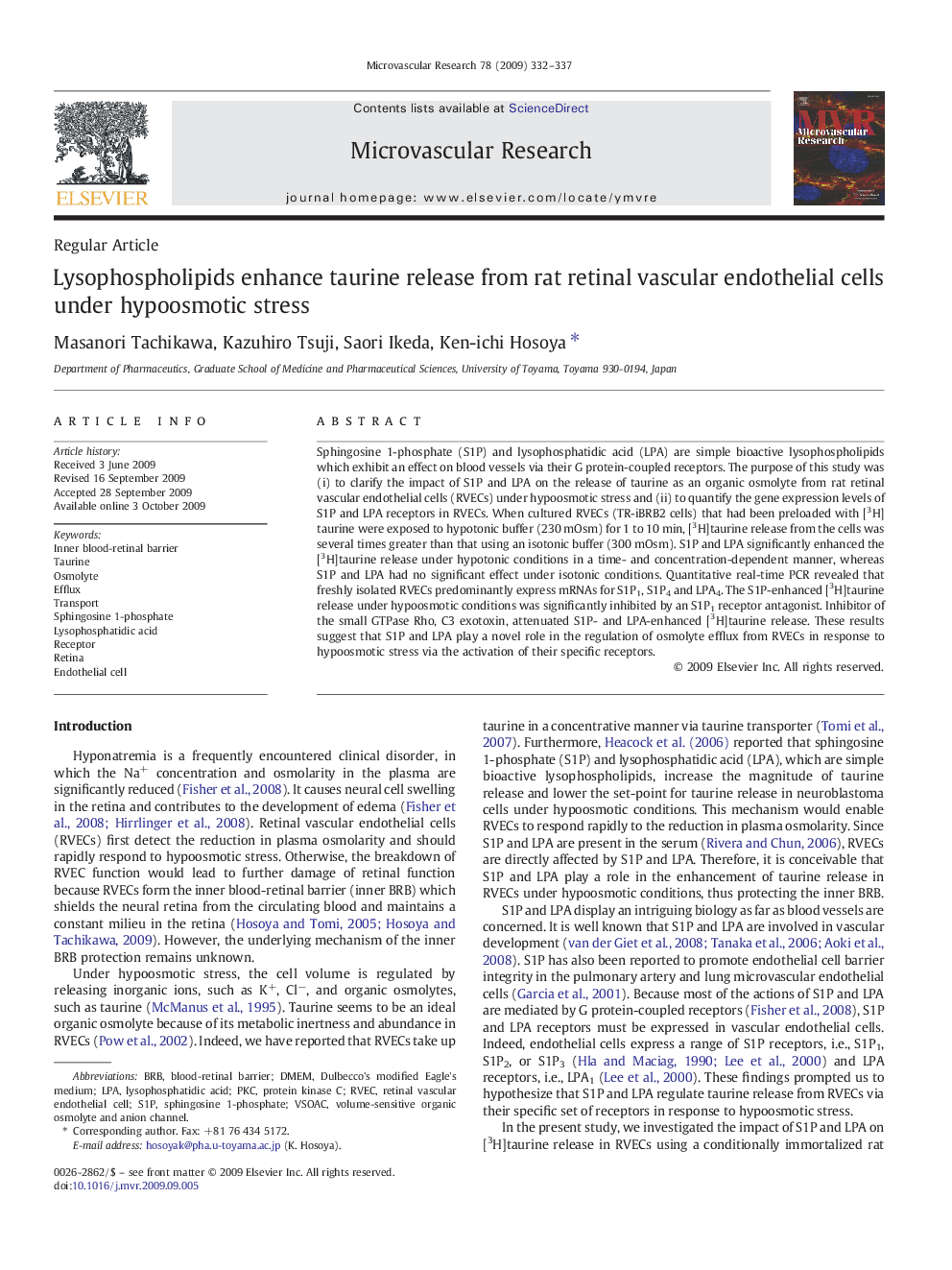| کد مقاله | کد نشریه | سال انتشار | مقاله انگلیسی | نسخه تمام متن |
|---|---|---|---|---|
| 1995305 | 1064961 | 2009 | 6 صفحه PDF | دانلود رایگان |

Sphingosine 1-phosphate (S1P) and lysophosphatidic acid (LPA) are simple bioactive lysophospholipids which exhibit an effect on blood vessels via their G protein-coupled receptors. The purpose of this study was (i) to clarify the impact of S1P and LPA on the release of taurine as an organic osmolyte from rat retinal vascular endothelial cells (RVECs) under hypoosmotic stress and (ii) to quantify the gene expression levels of S1P and LPA receptors in RVECs. When cultured RVECs (TR-iBRB2 cells) that had been preloaded with [3H]taurine were exposed to hypotonic buffer (230 mOsm) for 1 to 10 min, [3H]taurine release from the cells was several times greater than that using an isotonic buffer (300 mOsm). S1P and LPA significantly enhanced the [3H]taurine release under hypotonic conditions in a time- and concentration-dependent manner, whereas S1P and LPA had no significant effect under isotonic conditions. Quantitative real-time PCR revealed that freshly isolated RVECs predominantly express mRNAs for S1P1, S1P4 and LPA4. The S1P-enhanced [3H]taurine release under hypoosmotic conditions was significantly inhibited by an S1P1 receptor antagonist. Inhibitor of the small GTPase Rho, C3 exotoxin, attenuated S1P- and LPA-enhanced [3H]taurine release. These results suggest that S1P and LPA play a novel role in the regulation of osmolyte efflux from RVECs in response to hypoosmotic stress via the activation of their specific receptors.
Journal: Microvascular Research - Volume 78, Issue 3, December 2009, Pages 332–337